

• FEB 2 – Get outside just before dawn and look to the SE to see a thin waning crescent moon about 2 degrees below the planet Saturn.
 • FEB 4 – Moon is at new phase.
• FEB 4 – Moon is at new phase.
Clyde Tombaugh, the man who discovered Pluto, was born this day in 1906.
• FEB 5 – At 3:29 AM, the Moon is at apogee, the most distant point in its orbit around the Earth for the month, at a distance of 252,622 miles.
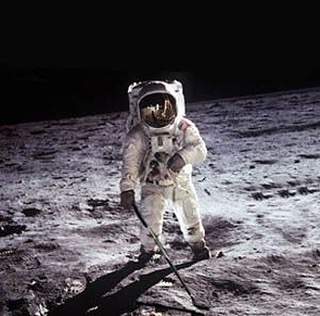
• FEB 6 – Astronaut Alan Shepard hits the first golf balls on the moon.
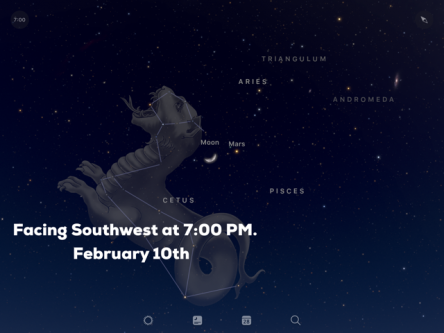
• FEB 10 – During the early evening hours, get outside and look for a waxing crescent moon about 6 degrees to the east of Mars.
• FEB 12 Moon is at first quarter.
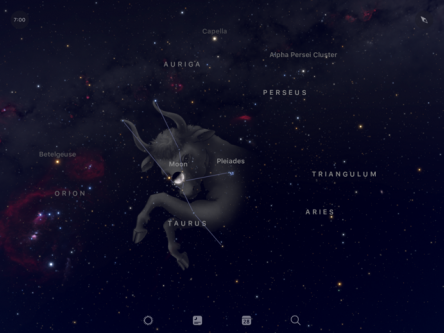
• FEB 13 – Mars is about 1 degree above the planet Uranus in the evening sky. Both planets will fit within the same binocular FOV (see our February 2019 feature article).
A bright gibbous moon sits amid the Hyades, an open star cluster in the constellation of Taurus.
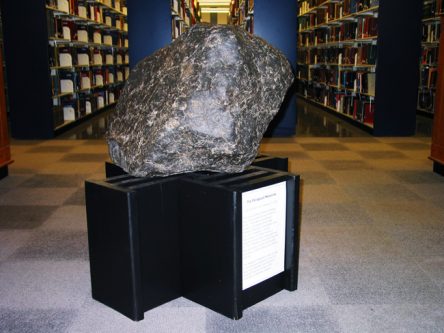
• FEB 17 – At 4:08 AM on this date in 1930, a large rock from space entered Earth’s atmosphere and then exploded into two, possibly three, pieces over Paragould, AR. The largest piece recovered was found on a local farm and weighed over 800 lbs, making it the second largest meteorite ever seen to fall to the Earth and then recovered. The meteorite is classified as an LL Chondrite, a rare type of stony meteorite. The meteorite fragments recovered from the Chelyabinsk, Russia fall on Feburary 15th, 2013, are also of the LL Chondrite type.
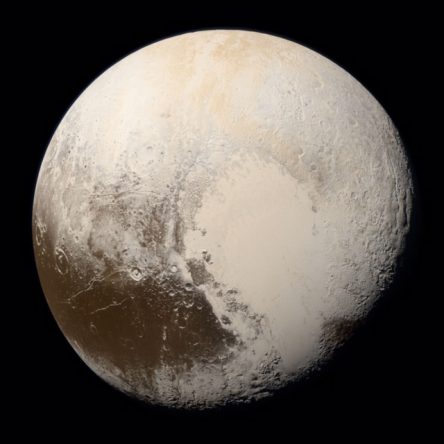
• FEB 18 – Pluto is discovered on this date in 1930 by Clyde Tombaugh at the Lowell Observatory in Flagstaff, AZ.
• FEB 19 – Full moon. At 3:03 AM CST, the moon is officially at perigee, the closest point in its orbit around the Earth for both this month AND for the year, at a distance of 221,681 miles. Perigees that coincide with a full moon are often referred to in the media as a “supermoon”.
 • FEB 26 Moon is at last quarter.
• FEB 26 Moon is at last quarter.
The planet Mercury is at “greatest eastern elongation”. When an inner planet is at “greatest elongation” this means that it has reached its greatest angular distance from the Sun upon the sky and is therefore at its best for viewing. In the case of Mercury, this angular separation can be anywhere from 18 to 28 degrees. This evening, immediately after sunset go outside and find yourself an observation spot with a clear view down to the western horizon. If there are no clouds, you should see Mercury glowing there in the twilight. Binoculars will be a big help.
When an inner planet is at its greatest eastern elongation, it is visible after sunset. You will be able to see Mercury in the western sky after sunset up until about the first week of March, so don’t waste time! When an inner planet is at its greatest western elongation, it is making an appearance in the eastern sky before sunrise.
• FEB 27 – The waning crescent moon is just above the planet Jupiter in the dawn’s southern sky (see our February 2019 feature article)